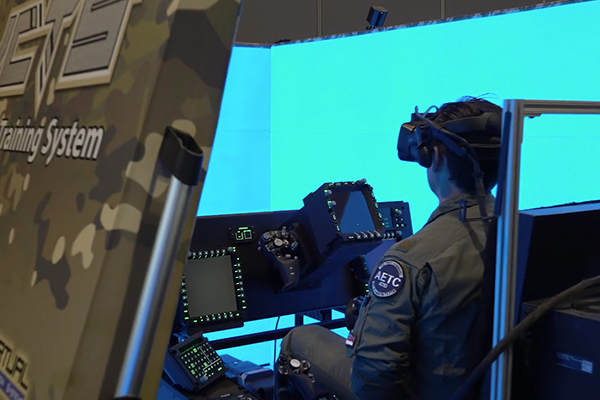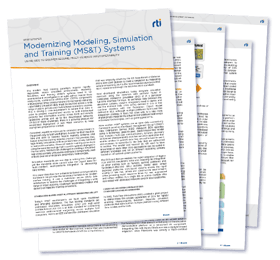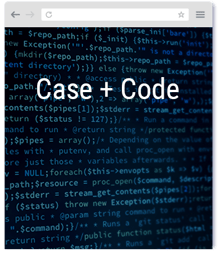Security
Addresses security down to the data object level, while maintaining real-time response
RTI is the world’s largest DDS supplier and Connext is the most trusted software framework for critical systems.
|
From downloads to Hello World, we've got you covered. Find all of the tutorials, documentation, peer conversations and inspiration you need to get started using Connext today.
RTI provides a broad range of technical and high-level resources designed to assist in understanding industry applications, the RTI Connext product line and its underlying data-centric technology.
The monthly RTI Newsletter lets you in on what’s happening across all the industries that matter to RTI customers.
RTI is the software framework company for physical AI systems. RTI Connext delivers the reliability, security and performance essential for highly distributed autonomous and physical AI systems.
Addresses security down to the data object level, while maintaining real-time response
Accelerates integration and expands new variables for each training exercise
Enables rapid response times for real, augmented, virtual and mixed realities in a single lab or across multiple sites
Provides backward compatibility for cross-vendor, cross-branch and cross-ally simulation of the evolving battlefield
Training for today's military threats requires simulated environments that can be assembled and reconfigured in an agile, ad-hoc manner from ready-made components. RTI Connext is the platform that brings distributed simulations together in a secure and scalable high-performance environment, while freeing developers from having to write custom data-sharing code.
Connext seamlessly stitches together new and legacy simulators and systems integration labs while adding humans and hardware in the loop to create new Live, Virtual and Constructive (LVC) environments. It provides rapid response times for real, augmented, virtual and mixed realities in a single lab or across multiple sites.
Read more about Connext and MS&T on the RTI Blog.

The Reconfigurable Virtual Collective Training System (RVCTS) incorporates the latest mixed reality technology to deliver the highest immersive fidelity of any collective training system. By leveraging Connext in their RVCTS, Kratos can ensure reliable backend communication among hardware and software real-time systems.
2020 Press Release: Kratos Training Solutions' Group Selects RTI's Connectivity Technology for Complex Modeling and Simulation.

The U.S. Army and the University of Iowa jointly developed several high-fidelity simulators to demonstrate how military vehicles and components can be tested and evaluated using Virtual Proving Ground (VPG) technology. RTI provided the software for real-time, low-latency data interchange to manage the many simulation components working concurrently.

FORCE Technology created the world's first system to provide a complete environment for training tugboat captains in maneuvering large vessels such as oil and gas tankers into restricted spaces using multiple boats. RTI delivered the connectivity framework that offered real-time data interchange between subsystems, without requiring the developers to know specific code for each subsystem added to the application.

Pilots around the world consider CAE’s Sim XXI full-flight simulator to be the closest simulation of the true experience of flight. It delivers breakthrough visual realism, precise cockpit replication, high-fidelity avionics simulation and flight and ground-handling characteristics that are indistinguishable from the aircraft. Connext helps to achieve this level of full-flight simulation, which involves a variety of complex subsystems sharing and processing data in real-time.
Learn more in the MS&T Capability Brief.

The Naval Sea Systems Command (NAVSEA) Dahlgren Division needed to investigate how to apply advanced technologies and concepts to the Naval Surface Ship Anti-Air Warfare (AAW) problem domain. Connext was used by the U.S. Navy High Performance Distributed Computing Project (HiPer-D) to create test bed demonstrations, based fully on COTS technology, that enabled NAVSEA to investigate technologies supporting real-time, distributed, scalable, fault-tolerant and heterogeneous computing systems that can be used in combat systems.

RTI Connext enabled RMS to send DDS-based data to a gateway in a cloud environment and then use that gateway in the cloud to build a repository of analyzable data on simulation. RTI Connext is also able to manage real-time data with fine grained configurable Quality of Service (QoS), ensuring the integrity and reliability of data in motion.
By initially contracting RTI Connext to support low-latency data transport, RMS was able to provide an architecture that was used to implement the UK AJAX crew turret trainer system, which is a deployed training system that is still actively in use by the UK MoD.

Bringing simulation assets together in a secure and scalable high-performance environment
A whitepaper on how to provide the necessary framework for modern warfare training


Discover how to rapidly create visualizations by combining Connext with Unity or Unreal Engine